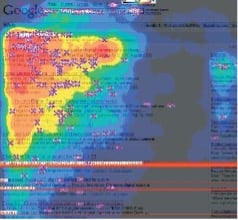
In the digital world, standing out is key when attracting clicks and engaging users. This is where writing the perfect meta description comes into play. Meta descriptions may be small, but they are mighty and shouldn’t be underestimated!
What is a meta description?
The meta description is an HTML attribute that does not appear on your website pages, only within the code. The meta description should form a brief summary of a website page’s content.
The meta description is displayed underneath the page title in search results, with the searched keywords appearing in bold. This makes the meta description a key component in a user clicking through to a web page. It needs to give the user confidence and be compelling enough to get the click.
Although meta descriptions are not a ranking factor, they are crucial for click-through rates, making them a key element in Search Engine Optimisation (SEO).
Why are meta descriptions so important?
The meta description is your website’s initial sales pitch to users. They:
- Enhance visibility: A well-crafted meta description can make your listing stand out in search results.
- Improve click-through-rates: Compelling descriptions encourage more clicks, driving more traffic to your site.
- Boost relevancy: By including relevant keywords, your page appears more relevant to search queries, aligning with user intent.
Let’s look at an example. I performed a search for “Ford Focus”, and this was the top result:

The meta description is the text underneath the hyperlinked page title – highlighted below in blue. We can see that this is a significant amount of real estate on the search engine’s results page:

My search term “Ford Focus” is appearing in bold, adding to my confidence that this page will provide the information I am seeking.
In this case, some things may actually be off putting:
- The word Newly is capitalised, which draws attention but is jarring
- The first sentence is poorly formed – “is filled advanced technology” should instead read “is filled with advanced technology”
- The final sentence doesn’t include the full name Ford Focus so is not bolded – a missed opportunity
- Users probably won’t know what a mild hybrid is so it’s not compelling – I certainly don’t!
In this case, Ford’s name and reputation would probably provide enough confidence to get the click. But most companies are smaller and lesser known than Ford, and small mistakes like these can send users to your competitors!
Search engine results pages are busy, visually noisy places. Your customers have the option of several different websites so make sure your sales pitch is on point.
How to write the perfect meta description
There is an art to creating an engaging meta description. Here are some key pointers to make sure yours are making an impact:
Keep it concise
After 160 characters meta descriptions are cut off in search results. Sticking with our “Ford Focus” search, here is an example of this – highlighted in blue:

Aim for 140-160 characters so your entire message displays.
Reflect the content
Your meta description should accurately reflect your page’s content. Misleading meta descriptions can lead to high bounce rates and poor engagement, negatively affecting your website’s reputation.
Include your keywords, ideally near the beginning
While not a ranking factor, it is crucial to include your target keywords or phrase as they become bold, drawing the eye and increasing confidence.
Users in the West normally look from left to right, so you are aiming for maximum impact in the first few words. There is an old eye tracking study called the Golden Triangle that visualises this perfectly:

Credit: Mediative
Make it unique
Every single website page should have a unique and informative meta description. We understand this can be a huge undertaking but duplicate meta descriptions can confuse both search engines and users, diluting your message and reducing click-through rates.
Use an active voice and include a call to action
An active voice engages users more effectively than a passive one. Encourage users to take action with verbs like “discover” or phrases such as “find out more”.
Entice the reader
Why should your page get the click? Aim to spark curiosity or offer value for a user’s valuable click-through.
Final thoughts
We hope this guide has highlighted the importance of well-formed and engaging meta descriptions. If you take anything away, make it these three things:
- Under 160 characters
- Unique on every page
- Include your keywords
If you would like any help with your meta descriptions or have any further questions, please do get in touch – we love to chat!